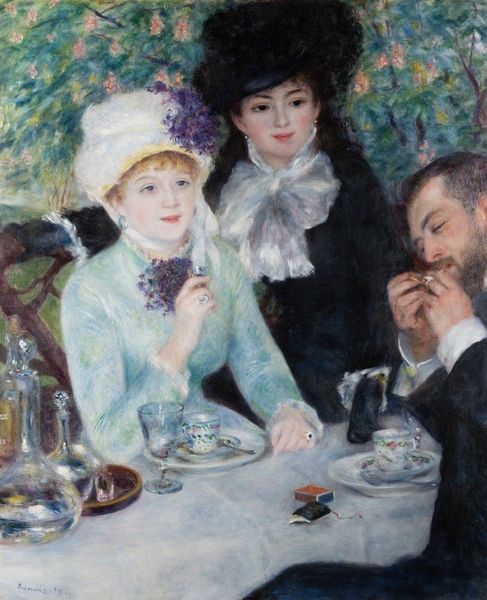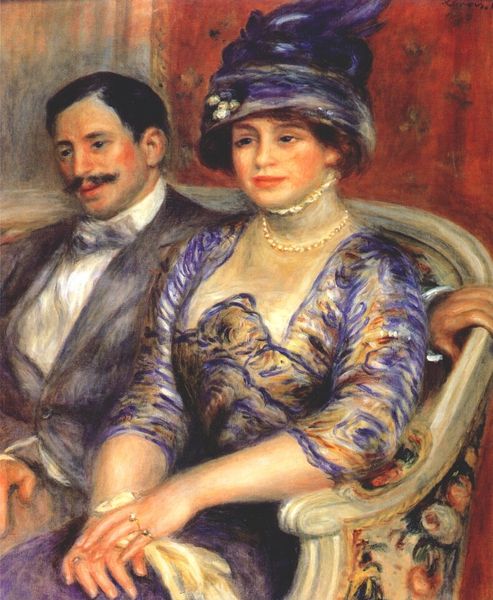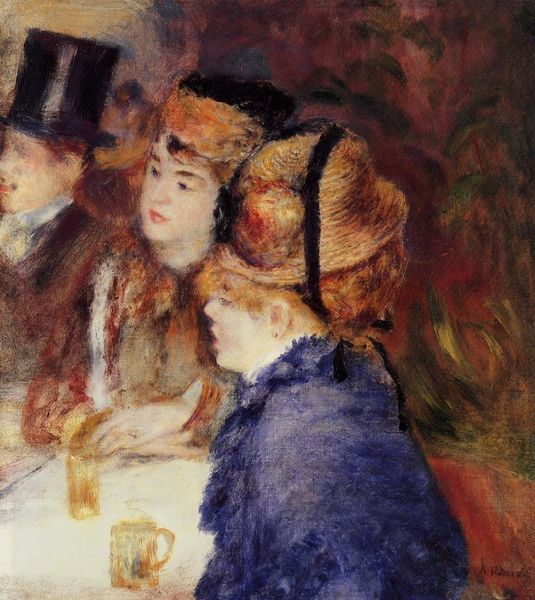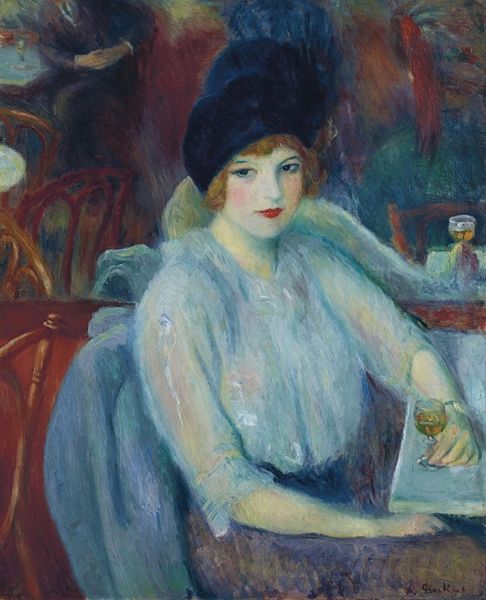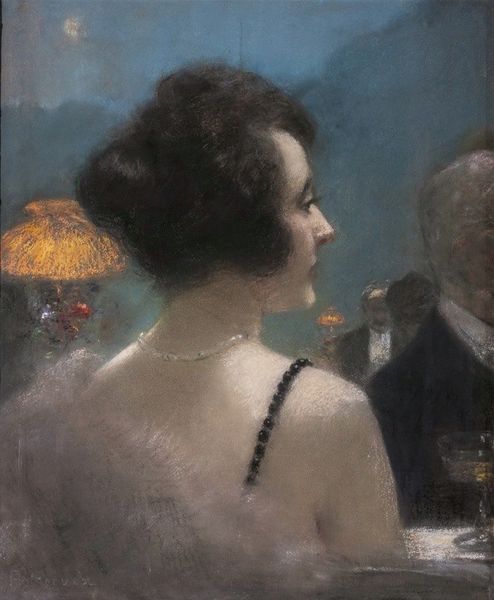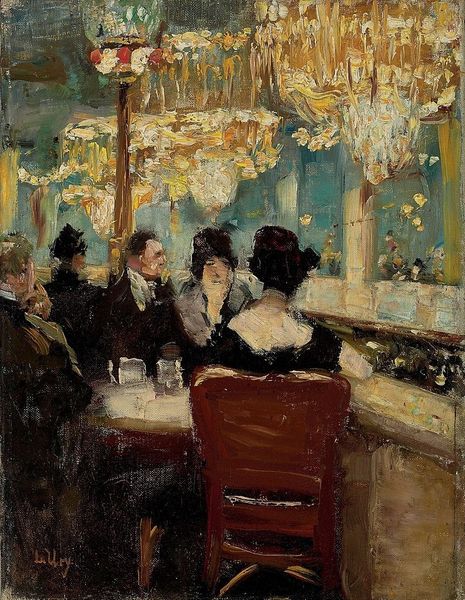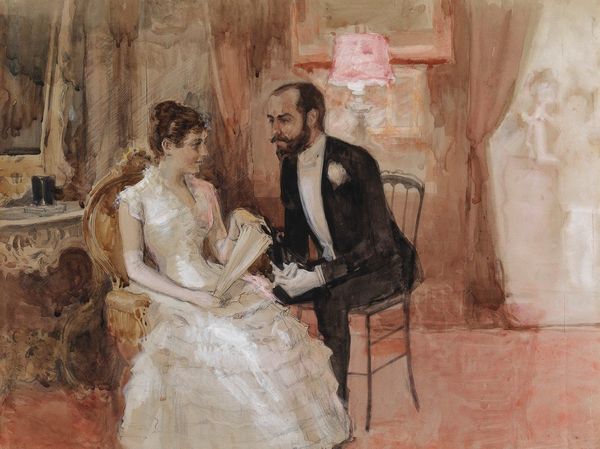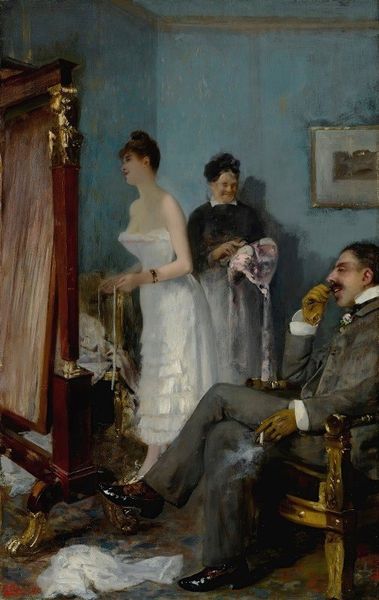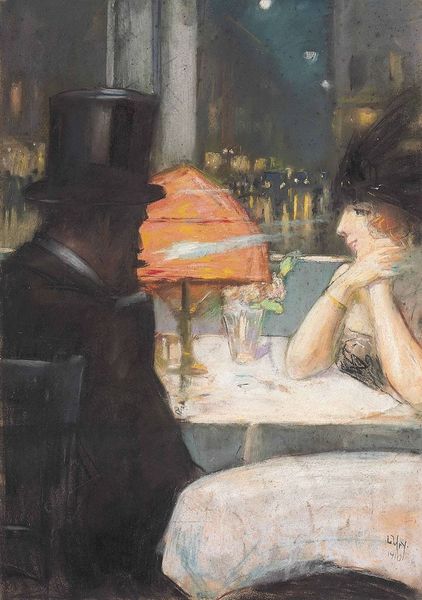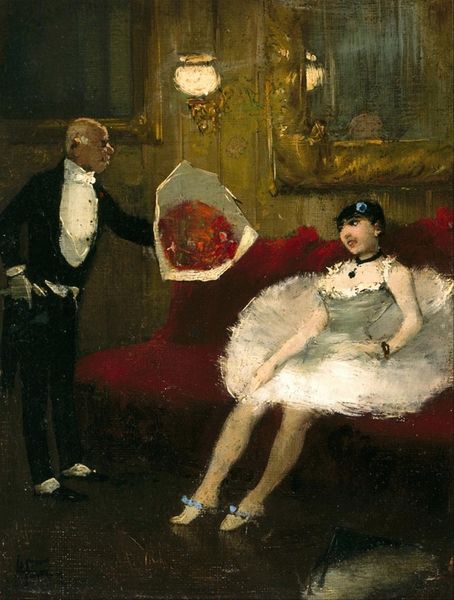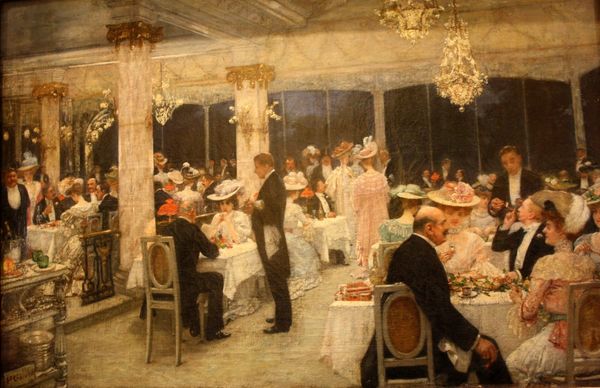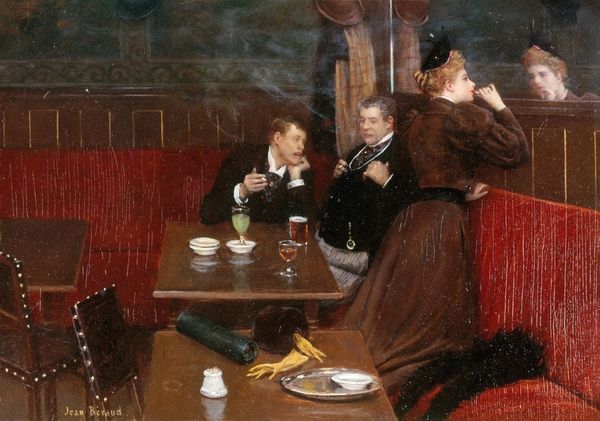
Copyright: Public Domain: Artvee
Editor: Glackens' "At Mouquin’s", painted around 1905, depicts a fashionable couple dining. I'm struck by the contrast; she seems contemplative, almost melancholic, while he appears jovial. What stories do you see woven into this scene? Curator: I see echoes of the emerging role of women in society and a nostalgia for traditional codes of behavior. Her blue dress, a bold yet contained choice, speaks to a changing landscape, but her reserved expression hints at inner conflict. Notice how Glackens positions her near the mirror, almost reflecting a divided self, while the man seems anchored in the present moment. The mirror becomes a potent symbol of self-reflection, possibly indicating the weight of societal expectations. Editor: That's fascinating. So, is the restaurant itself significant? Curator: Mouquin’s was a real place, a symbol of burgeoning cosmopolitan culture. Glackens’s choice to set this tableau in such a setting immediately invites questions about class, leisure, and the performative nature of social interactions. This locale would carry social symbolism with its lavish patrons and traditional values. Editor: I didn't think about it that way. How do the colors play into your reading? Curator: The limited palette focuses our attention on the emotional nuance of the faces. The woman's cool blues are juxtaposed with the warmth of the man’s complexion and red bow tie, maybe hinting at divergent paths or emotional distances, each framed in isolation. Don't you find it almost dreamlike? Editor: It is very powerful! I’ll never look at a restaurant scene the same way. Curator: And I'll remember to always consider the social landscape, ever influencing our interpretations.
Comments
No comments
Be the first to comment and join the conversation on the ultimate creative platform.
